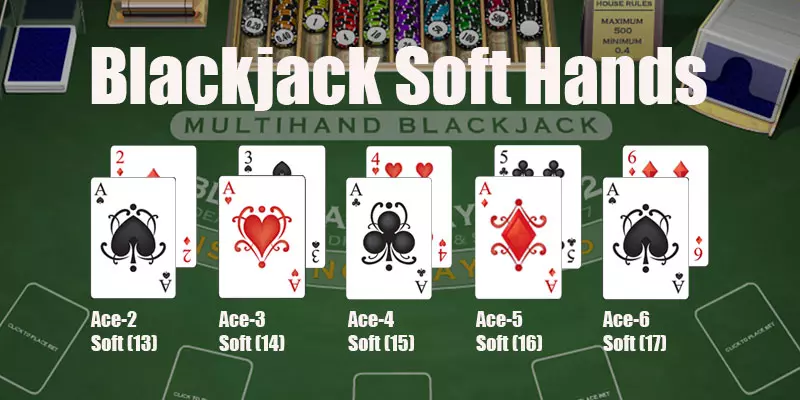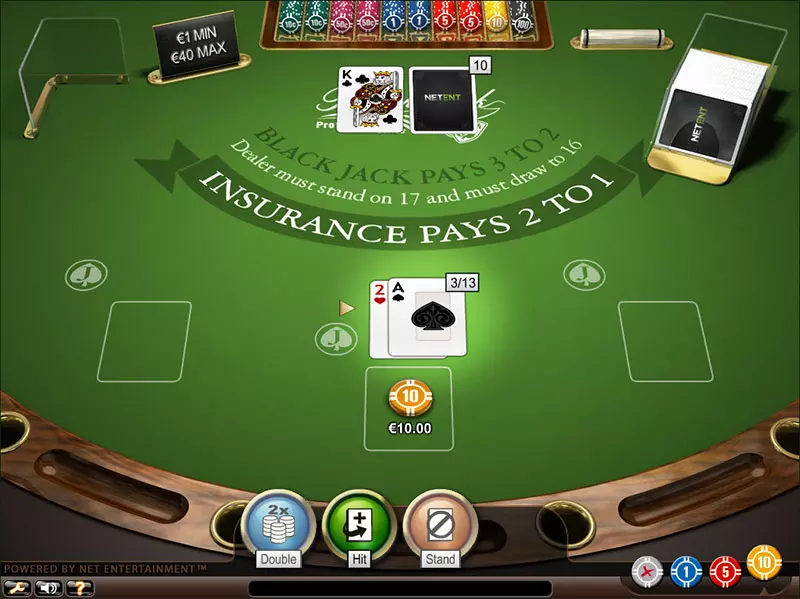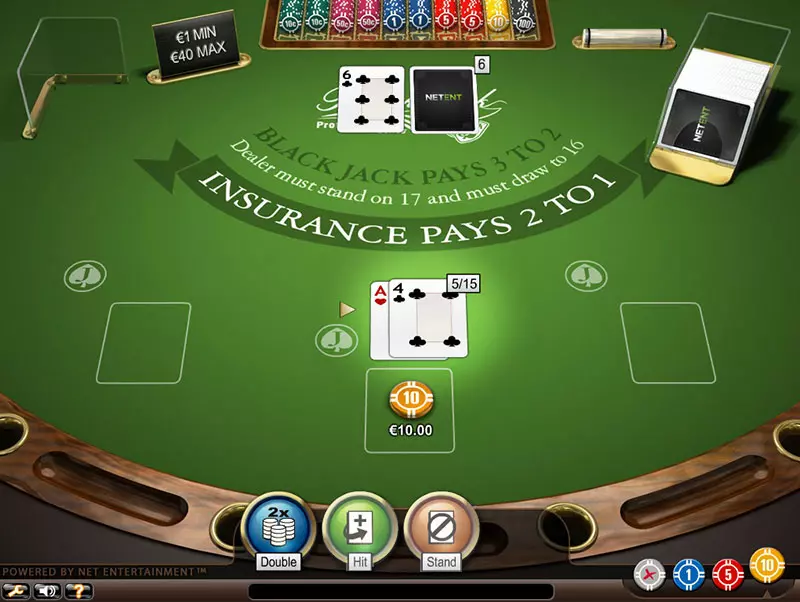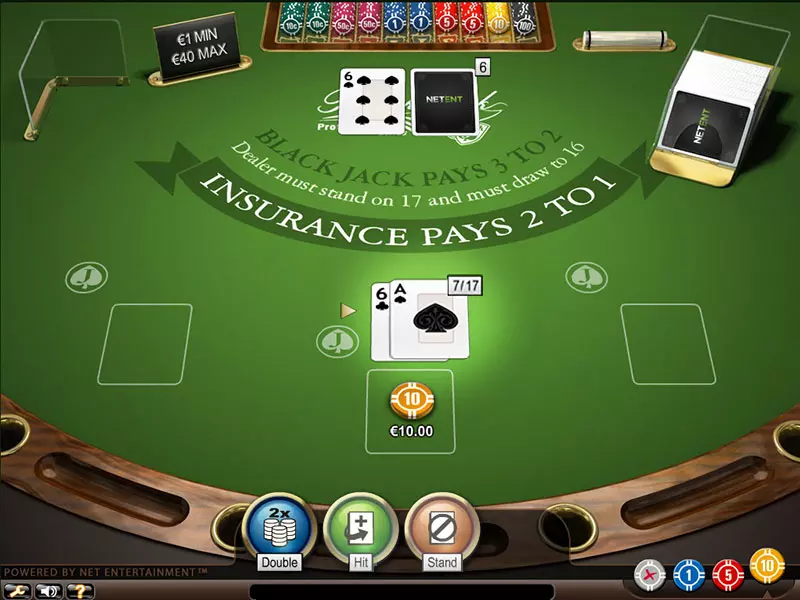During every game, players face a lot of tough choices. To be able to tackle them successfully, gamblers need to prepare beforehand and know what the odds and possible outcomes of the situation are.
Along with solid knowledge and a very good strategy, players need to have a decent bankroll, discipline, and money management. The best way to learn is through practice, however. If players don’t want to lose a considerable amount of money, they need to make sure they are familiar with the casino and the game’s rules and requirements before they play.
What Are Soft Hands
Many of the moves from the basic strategy chart are logical and intuitive to novice blackjack players. For example, they understand that hitting hard 16 is recommended whenever the dealer has a ten or an ace or that they should split 8s when the dealer starts with a 5 or a 6.
However, some basic strategy plays are not so intuitive, causing novices to frequently misplay certain hands. Such is often the case with soft 13 through soft 17, so these are the hands we are going to examine today. But first, let’s explain what the term “soft hands” refers to.
Players need to know how to proceed in cases where they have soft hands as such situations occur more often than gamblers realise. Players have such a hand when one of the cards is an ace valued as 11, meaning that they will not go bust next time they take an extra card. The reason for it is that any other card in the deck will either be equal to or less than 21 and there is no chance for players to go over this total.
For instance, a hand containing A-2 is soft 13 while one consisting of A-2-3 is a soft 16. If you draw another deuce on your soft 16, you will end up holding soft 18. You can draw again without the risk of breaking your hand. If you catch a higher card, like 9 for instance, your ace will automatically assume the value of 1, preventing the bust and giving you a hand total of hard 17. The flexibility soft hands give to the blackjack player is what makes them so valuable.
Gamblers must understand that having an ace in their hand gives them the opportunity to be very flexible and decide whether they would like to value it as 1 or 11. It allows them to change their hand’s total value accordingly and it is the card gamblers hope for the most. Additionally, soft hands present players with great opportunities for profit maximisation when the dealer is weak. This usually happens with the help of soft doubling, but we shall tackle this topic a little later on.
To illustrate how players should proceed in cases where they have a soft hand 13 to 17, it will be best to consider some example situations which players struggle to deal with the most. Gamblers need to bear in mind that whenever they have an ace in their hand, they have a soft hand and need to take full advantage of this situation.
Such types of hands give players the chance to double down and it can really work in their favour. However, players need to make sure they understand thoroughly what the term soft hands means in order to make the best possible move.

Soft 13 Cases
A very favourable situation is when players’ two cards are a deuce and an ace as this leaves them with a soft 13 hand, of course, if they decide to value the ace as an 11. The reason why this is an advantageous position for them is that whatever card players draw next, they can’t go bust as the ace gives them the needed flexibility to change it accordingly.
If gamblers get, let’s say, a 10, they have the opportunity to easily switch and value their ace as 1, which leaves them with a hard 13 hand.
In such cases where players have a deuce and an ace as the two cards in their hand, it will be best for them to be prepared in advance how to proceed. This preparation involves familiarising themselves with the playing conditions that await them at their chosen table. This is because the recommended playing strategy for soft 13 is impacted by the number of decks a blackjack variation implements.
If the dealer’s upcard is 5 or 6, the players should double down if the game is dealt out of two to eight decks. The dealer’s fixed standing rule does not influence the strategy for soft 13. With the rest of the dealer’s possible upcards, players should hit.
Aggressive play through doubling is advisable against a 5 or a 6 because the dealer’s probability of busting is the highest with these two upcards. Players should strive to capitalise on this weakness by doubling their wager on soft 13 and generating twice as much in profit in the process.
As for those of you who are into playing single-deck blackjack variations, you must double on your soft 13 when the dealer shows 4, 5, or 6. Hit the soft 13 against all the other dealer upcards, namely 2, 3, 7, 8, 9, 10, and ace. If players follow this strategy, their chances of going bust are significantly decreased.

Soft 14-15-16 Cases
Whenever players have a card combination which leaves them with any of the following hands – soft 14, 15 or 16, they should choose to make the same move as the strategy applies to all of them when one is playing with a single deck of cards only. If the dealer’s upcard is a 4, 5, or 6, players need to double down. The monetary sanction for doubling down according to a basic strategy chart intended for multiple-deck S17 games when playing single-deck blackjack is very small. You will give up only 0.008% of your advantage.
Making the optimal playing moves is of greater importance at single-deck tables because of the more prominent effect of card removal. The bad news is many single-deck variations of the game prohibit players from doubling on soft hands, restricting this move only to hard totals 9, 10, and 11.
Blackjack Hand 14, 15 or 16
Surrender Rule
Blackjack Soft Hand 13 to 17
Blackjack Soft Hand 18
Blackjack Soft Hand 19 or 20
For the rest of the possibilities for the upcard of the dealer, players need to hit. It is observable that the only difference between the strategy for soft 13 and soft 14, 15, and 16 is when players are against 4 as the dealer’s upcard.
Let’s have a look at the following case where gamblers have soft 15 and the dealer’s upcard is 6 and what the possible outcomes of this situation will be, provided players will follow the strategy and double down.
If gamblers get a 3, this leaves them with a total of 18 for their hand which is pretty good but still, we need to remember that the average winning hand is 18.5 and 18 doesn’t guarantee us winning.
If players get a 2, then their hand totals 17 and if they draw an ace, the total value of their hand will be 16. What players need to hope for is to get a 4, 5, or 6 as this will leave them with a hand totalling respectively 19, 20, and 21. The rest of the cards will form a hand totalling 15 or less, which is unfavourable for the players.
There are small deviations from the above-listed strategy when one is up against multiple decks of cards. To be specific, soft 14 calls for soft doubling only when the dealer’s face-up card is either a 5 or a 6. You hit against the 4 and all the other possible dealer upcards.
As for doubling on soft 15 and soft 16, you should do it against 4, 5, and 6, and hit versus the rest of the dealer upcards. In double-deck blackjack with a dealer who draws to soft 17, doubling is recommended with the soft 14 against the dealer’s 4 as well. This leads to a minuscule gain for the player, but still allows you to earn more from your soft 14.
Holding soft 16 is one of the trickiest spots rookie players can find themselves in. Some rookies approach this hand the same way they would play hard 16. Standing on soft 16 is never recommended for the simple reason you cannot exceed 21 with a one-card draw.
So why not try and improve your situation by doubling or hitting on your soft 16? In reality, the only way for you to win by standing on soft 16 is if the dealer goes over 21. The probability of winning with a hard total of 16 coincides with that of winning with 3-2 or A-A (soft 12).

Soft 17 Cases
If players have an ace and a 6 in their hand, this means that they have a soft 17 hand. A soft 17 (eg. A-6, A-2-4, A-3-3) is, by and large, one of the most commonly misplayed totals in the entire game of blackjack. To be able to make the best possible move, gamblers should always act according to the dealer’s upcard and their hand’s total value. In this sense, if the dealer’s upcard is 2, 3, 4, 5, or 6, players’ best move is to double down provided that they play single-deck variants.
Doubling yields optimal value in all single-deck games no matter what the standing rules for the dealer are. Given that a single-deck table disallows soft doubling altogether, you should hit your soft 17 instead. Hitting on soft 17 is advisable against dealer upcards 7 through ace as well.
The reason for it is that if players have a soft 17 and get a 10 or any of the face cards, this will leave them with a hard 17. In this case, if players decide to follow this strategy and double down, they have a better chance to win more money as it places them in a favourable position.
As for multiple and double-deck blackjack, doubling down on soft 17 is a good move only if the dealer starts their hand with lower upcards 3 through 6. Hitting is the best play against all other upcards in multiple-deck blackjack.

Mistakes to Avoid when You Have Soft 17
Soft 17 is a very tricky hand rookies often do not know how to approach correctly. Many people choose to settle for a total of 17, declining additional cards. This is a terrible idea because a total of 17, soft or hard, generally does not hold well regardless of the value of the dealer’s upcard.
The sad reality is that declining cards on your soft 17 would cost you more money compared to both doubling and hitting. Under no circumstances should you stand on soft 17, period. If you are still skeptical this is a bad move, consider the following.
One of the two common house fixed rules is for the dealer to hit rather than stand on soft 17. This boosts the casino advantage (by 0.22%) as it gives the dealer a room for improvement with no danger of busting on the next one-card draw. Exactly the same goes for the player with soft 17.
Apart from that, new players often struggle with playing correctly soft 17 hands that contain multiple cards, i.e. such that have already been drawn to. One example is a hard hand that starts with 4-2 versus the dealer’s 5. The player hits as basic strategy says and pulls out an ace so now they have a soft 17 (4-2-A).
Doubling down on a multi-card soft 17 is no longer possible in most variations of the game. Many rookies would choose to stand on this hand whereas the correct strategy is to hit the soft 17. What happens next depends on the player’s total and what the dealer holds. Do not hesitate to consult with your strategy chart if you are unsure about the move.
As we already told you, doubling on soft hands 13 through 17 is normally advisable versus small upcards that result in greater bust rates for the dealer. Some misguided players, however, double on soft 17 against the dealer’s 7. This is an unwise decision because the dealer is not as weak when holding a 7.
The dealer’s probability of exceeding 21 is not as high at 26.19% of the time in six-deck S17 games. Meanwhile, the dealer would manage to reach a total of 17 roughly 37% of the time and push with the player’s soft 17. Hitting is recommended over doubling because the dealer is not at such a high disadvantage with a 7 to justify pouring more money into the hand.
Another common scenario inexperienced players struggle with involves holding a soft 17 versus the dealer’s 6. Here we have another action hand, meaning that standing on it is out of the question.
In standard six-pack blackjack, standing on soft 17 versus the 6 will earn you around £1.20 on average whereas hitting nets you around £12 per every £100 wagered in the long run. Doubling is the best play in this case, giving you long-term profits of approximately £26 per £100 wagered.
| EV for Basic Strategy Plays for Soft 17 vs. the Dealer’s 7 and 6 in Six-Deck Blackjack | |||
|---|---|---|---|
| Soft 17 vs. 6 | Soft 17 vs. 7 | ||
| Standing | +0.011739 | Standing | -0.106809 |
| Hitting | +0.128052 | Hitting | +0.053823 |
| Doubling | +0.256104 | Doubling | -0.013758 |
Conclusion
It is of crucial importance for players to be aware of the meaning of soft hand as it will give them a better understanding how the game works. Due to the fact that this phrase is not a basic rule, many gamblers who play for years still don’t know what it means. In order to play their hand in the best possible way, players need to know what will be the result of every move they make.
Soft hands can be formed in a number of ways and this is the reason why gamblers need to know the meaning behind this phrase. Only then they will be able to make wise choices for every hand and achieve the desired result.
| Soft 13 through Soft 17 Basic Strategy Chart for Single-Deck Blackjack | ||||||||||
|---|---|---|---|---|---|---|---|---|---|---|
| Players’ Hand | Dealer Upcard | |||||||||
| 2 | 3 | 4 | 5 | 6 | 7 | 8 | 9 | 10 | Ace | |
| A-2 | H | H | Dh | Dh | Dh | H | H | H | H | H |
| A-3 | H | H | Dh | Dh | Dh | H | H | H | H | H |
| A-4 | H | H | Dh | Dh | Dh | H | H | H | H | H |
| A-5 | H | H | Dh | Dh | Dh | H | H | H | H | H |
| A-6 | Dh | Dh | Dh | Dh | Dh | H | H | H | H | H |
| Soft 13 through Soft 17 Basic Strategy Chart for Multiple-Deck Blackjack | ||||||||||
|---|---|---|---|---|---|---|---|---|---|---|
| Players’ Hand | Dealer Upcard | |||||||||
| 2 | 3 | 4 | 5 | 6 | 7 | 8 | 9 | 10 | Ace | |
| A-2 | H | H | H | Dh | Dh | H | H | H | H | H |
| A-3 | H | H | H | Dh | Dh | H | H | H | H | H |
| A-4 | H | H | Dh | Dh | Dh | H | H | H | H | H |
| A-5 | H | H | Dh | Dh | Dh | H | H | H | H | H |
| A-6 | H | Dh | Dh | Dh | Dh | H | H | H | H | H |